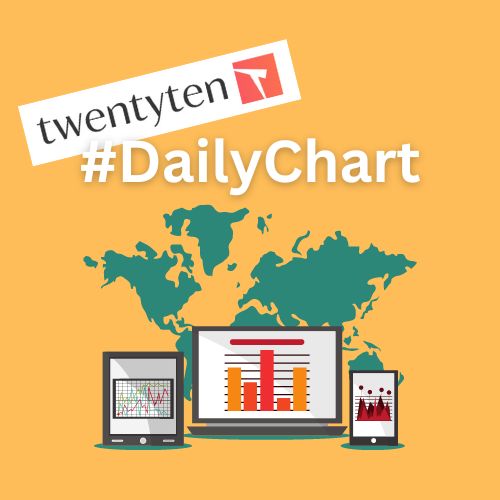Women on the Fringe of Africa’s Agritech Revolution
Yemisi Akande is a maize farmer, her farm is situated in the Ikorodu axis of Lagos. She has been trying to get a loan to support her maize business to no avail; a number of microfinance banks that Akande approached declined to give her a loan. Among the challenges she also faces is the high price of fertilizers which has affected the desired output from her farm.
Women make up a large part of the agricultural workforce in different parts of the world. In Sub-Saharan Africa, they represent 40 per cent, reports by the World Bank show that in some developing countries their contribution exceeds 50 per cent.
“The major reason the banks told me is that I do not have any collateral, and a lot of farmers that were given loans without collateral did not repay their loans.”
However, many Nigerian smallholder farmers, especially women remain unbanked, so banks and lending institutions perceive them as high risk, making it tough to access formal financial services, such as digital payments and credit, to reinvest in their farms and improve crop quality and yields.
From West Africa to East Africa, a slew of agritech innovations have emerged over the past decade and they include credit offering mobile apps, SMS weather alerts, drone imagery and soil sensors to provide real-time data on crop health. Among the technological developments in agriculture are Hello Tractor (Nairobi Kenya), a tractor-sharing platform which assists farmers with limited resources to access affordable tractor services while also providing additional income and enhanced security for tractor owners. Aerobiotic (Cape Town, South Africa) is a data analytics company using aerial imagery and machine learning algorithms to optimize crop performance for farmers globally.
AgriPredict (Lusaka, Zambia) provides farmers with access to information that will help them identify diseases, and predict pest infestations and weather conditions. AgroCenta (Ghana) connects stakeholders in the staple food value chain from smallholder farmers to buyers under one platform for effective trading. ColdHubs (Owerri, Nigeria), a solar-powered walk-in cold room for smallholder farmers in farm clusters and outdoor markets to store and preserve fresh produce 24 hours a day, seven days a week, extending their shelf life from two days to more than 21 days.
The exclusion of women farmers in technological development includes lack of access to reliable internet, inability to afford internet bundles, and smartphone ownership, among others. The ripple effects of excluding women have also lowered women’s chances in the agricultural sector, coupled with the precarious effects of the COVID-19 pandemic which has reversed gains achieved in tackling the gender gap in mobile internet usage and smartphone ownership.
According to Max Cuvellier, Head of the Mobile for Development programme at GMSA, “Mobile internet adoption has been growing rapidly, but the unconnected or lesser-connected are still more likely to be poor, to be less educated, to be rural, to be older, and to be women.” A 2020 report on the mobile gender gap shows that despite its importance, mobile access and use remain unequal. Across low and middle income countries (LMICs), women are still eight per cent less likely than men to own a mobile phone, and 20 per cent less likely to use the internet on a mobile.
A key barrier is smartphone ownership, which is also 20 per cent lower for women than for men. Mobile ownership and use provide life-changing benefits to women, their families, communities and the economy. The research also stated that mobile ownership makes the majority of men and women feel safer, and provides access to important information.
A joint report by the Alliance for Affordable Internet and the World Wide Web Foundation in October 2021, 32 low- and middle-income countries missed out on US$1trillion in GDP in the last decade as a result of women’s exclusion in the digital world.
The digitization of agriculture is on the rise, and services such as advisory work and access to markets are shifting online. However, women are increasingly left behind due to a lack of literacy and poor technical know-how. The exclusion of women in the digital world is also hurting agricultural productivity in low- and middle income countries.Many of the limitations women farmers face are posed by their inability to read and write, women tend to have lower literacy levels than men. Functional literacy is vital for women to learn digital skills, understand how to manage their farms and keep records of financial transactions. While there have been a number of initiatives to help women farmers in Africa take advantage of technology such as the Women Farmers Programme in South Africa, Purchase For Progress (P4P) Literacy training in DRC, Mali and Burkina Faso, Federal Ministry of Agriculture and Rural Development (FMARD) training on financial literacy and entrepreneurship in Nigeria, there is still a lot more that needs to be done to further strengthen smallholder farmers across the continent.
Mike Michener, Deputy assistant administrator at USAID’s Bureau for Resilience and Food Security, said “These incredible technologies must be researched, scaled for use by smallholders and accessible to all, including women and youth.”
Agricultural development is a powerful tool for ending extreme poverty and boosting shared prosperity, nonetheless, it is crucial to ensure that the benefits of the so-called “fourth agricultural revolution” is not limited by lack of access to resources.
This story was produced under Dataphyte’s 2022 Media Fellowship



